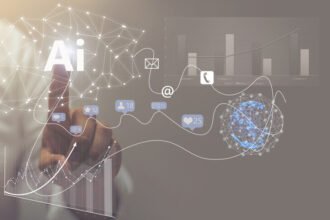Back in the 1970s, a team of IBM researchers sought to create a new architecture for storing, managing and interacting with digital data to free application developers from the burden of having to know the details of how data was managed.
The result: the invention of the relational database and later DB2, the company’s first commercial relational database system for large enterprises, which was announced in June 1983.
Back in the 1970s, a team of IBM researchers sought to create a new architecture for storing, managing and interacting with digital data to free application developers from the burden of having to know the details of how data was managed.
The result: the invention of the relational database and later DB2, the company’s first commercial relational database system for large enterprises, which was announced in June 1983.
IBM not only developed the math and science behind the concept of the relational database, they also made a breakthrough that spawned an entirely new and influential category of software.
Prior to the introduction of DB2, databases stored information in a hierarchical fashion. Information was stored in what’s called a “parent/child” structure. A relational database offers users more flexibility because it understands relations, how information in different tables is related, in a more flexible manner than a parent/child hierarchy. This enables a much more powerful ability to analyze the data.
The relational database concept became the overwhelming choice for the storage of information which, to this day, supports the world economy, including financial records, manufacturing and logistical information, personnel data and much more.
Almost thirty years later, DB2 has transformed into a diverse, powerful workhorse relied upon by global companies of all sizes in every industry. More than 400,000 IBM clients use it today. For instance, DB2 is used by the top 50 banks worldwide, nine of the 10 top global insurance companies, 24 of the 25 largest retailers globally and over 100 of the largest governments and agencies.
In fact, DB2 enables businesses to better understand the relationships held in the data and provides organizations with the opportunity to build up a better understanding of their business. By using a relational database, for example, a bank can spot customer behaviors and trends across their product lines more effectively.
For that reason, DB2 foreshadowed the concept of business intelligence and analytics that plays such a major part in applications and doing business today in a “smarter” fashion. “Predictive analytics” enables businesses to analyze their sales patterns and target customers better.
Originally designed to operate on mainframes, the movement to bring “DB2 to the desktop” in the 1990s enabled more users to take advantage of relational databases to run their businesses. DB2 offers high availability, disaster recovery and scalability to companies, no matter how large or small.
DB2 has evolved over the last three decades to help companies adapt their database strategy to meet the demands of evolving, industry-specific business challenges. In 2007, the ability to natively handle XML data was added.
XML can significantly reduce the cost of developing and maintaining applications with continuously evolving schemas – such as on-line income tax forms that vary from year-to-year. With the breakthrough pureXML support only provided by DB2, the benefits of XML extend to the database and include the ability to easily evolve an XML schema in minutes to match the application changes without updating table schema or the existing XML data as would be required in a relational database.
Now with the introduction of DB2 10, the product has added new features like adaptive compression, multi-temperature data management, time travel query and big data integration. These features enable enterprises, in the era of big data, to stay agile and not deal with all the data, just the most relevant information. The challenge is compounded by new high performance applications that require instant access to new types and massive amounts of data from social networks, sensors, and mobile devices, along with data growing inside data warehouses today.
Businesses with large volumes of data know how expensive storage can be. DB2 can dramatically reduce that cost with industry leading data compression technologies that compress rows, indexes, temporary tables, with compression rates that can reach over 90 percent. Moreover, because compression allows DB2 to keep more data in memory, thereby avoiding performance-robbing disk I/O, database performance can increase considerably.
For many businesses, database downtime equals both money and opportunity lost. DB2 can minimize the downtime associated with many planned activities, such as altering a table, and many unplanned events, such as a power outage, by either eliminating the downtime completely or reducing it’s duration to a few seconds.
Clearly, now more than ever, business leaders want to easily see what’s going on in their businesses, and the modern relational database, which has evolved over the years, enables them to do so. DB2 provides clients a way to tame the data deluge and accelerate the consumption and analysis of business critical data.
In the era of big data, it is about platforms like DB2 that enable essential insights to understand your customer, business and market.







